NUTTY TIMES AND COLD WEATHER
Nuts Galore
What a nutty time of year, literally! Chestnuts and black walnuts, two of my favorite nuts, were raining down, figuratively, just before the middle of the month.
Black walnuts are free for the taking. Wild trees are everywhere around here, and keep increasing because of overlooked nuts buried by squirrels. The nuts are so abundant this year, and most years, that squirrels and humans can have their fill. (Not so with my filbert nuts; squirrels will strip those bushes clean.)
Black walnuts have a strong flavor. Like dark beer, fresh blackcurrants, and okra, not everyone likes the flavor. That’s fine. Fast food chains might purvey foods that everyone sort of likes, while a home gardener and gatherer can grow and gather fruits and vegetable and nuts that he or she really, really likes, and ignore what he or she really, really does not like.
There’s also, if you’re not a squirrel, the getting-to-the-nut problem with black walnuts. The first step is to remove it, as soon as possible after gathering the soft, messy, dark-staining husk. My wife, Deb, does this; I try and come up with contraptions to ease the job of husking 10 five-gallon buckets worth of nuts that eventually transmutes to 8 one-quart mason jars filled with nutmeats.
We’ve gone through a few incarnations of huskers. One year I bought an old fashioned corn husker, which needed some modification with an angle grinder. It didn’t do the job. Another year I ran the tractor back and forth over the nuts in the driveway, a common method, but not effective enough.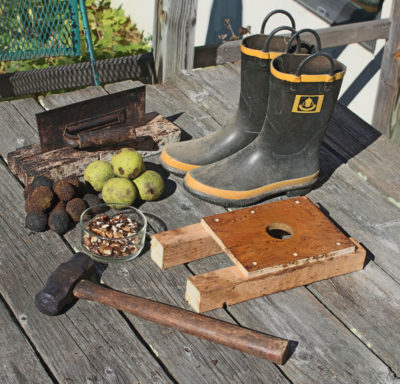
In years past, Deb has given each nut a tap with a light sledge hammer, which is enough to loosen the husk so it can be easily twisted off. Another year, I mounted a flat piece of metal in a slot I cut in a short length of 2-by-4 wood. Rolling the nut over the metal edge was enough to make the husk easy to twist off.
This year I drilled a nut-sized hole in a piece of wood and mounted it over a bucket. One whack with a light sledge hammer drove the nut through, minus the husk. Or, it was supposed to do that. One piece of husk, on the leading edge, alway stayed attached to the nut.
So now Deb is back to one of the standard methods for de-husking black walnuts: Stomp on them with your heel, then pick them off to rub off any remaining husk.
Readying for Cold Weather
Enough with the nuts . . . tonight (October 10th) temperatures are predicted to be in the low 30s, which means the high 20s in this cold spot. Mostly, I and the garden are ready for cold. Still to be done are:
•Close all hose spigots and open ends of drip emitters and main lines, watering wands, and hose sprayers to prevent the expansion of freezing water water from causing damage;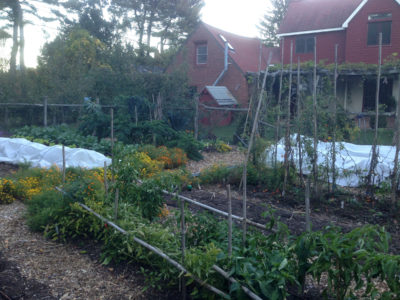
•Set up hoops and either clear plastic or row covers over beds of lettuce, Chinese cabbage, endive, arugula, and mustard greens. These vegetables tolerate temperatures well into the 20s, but I’ll cover them just in case. And they’ll anyway need the protective coverings soon;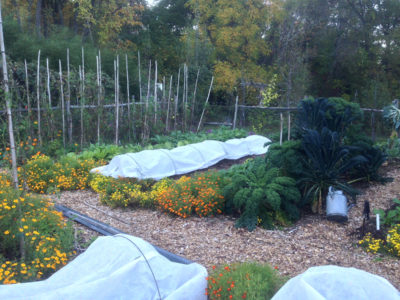
•Bring tropical plants indoors. Banana “trees,” staghorn fern, avocado, and clivia have laughed off cold so far, but tomorrow morning would not look so cheery if left outdoors. They get bright windows. A banana’s growing point is below ground which allows some gardeners to merely lop the whole top off the plant and store the bulb, in its pot, through winter under cool, dark conditions;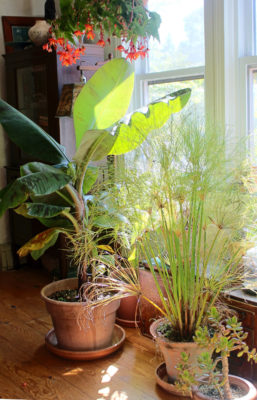
•Subtropical plants could survive temperatures into the 20s. I’m hoping for a crop from Golden Nugget mandarin, Meyer lemon, and Meiwa kumquat, so they’ve been walked indoors and perched near the most sun-washed windows in my house.
•Feijoa, olive, and Chilean guava are, like citrus, evergreen, subtropical plants, except they can tolerate colder temperatures than citrus. They sport neither fruits, flowers, nor flower buds now, so will remain outdoors until temperatures dip into the low 20s. Potted rosemary is also in this category; because I will be visiting it many times over the months that follow to clip off sprigs clipped for pizza and salad dressing, it’s new home is a sunny kitchen window.
•Basil will be dead tomorrow. Leafy stems picked today, their bottoms plunked into a glass of water, will provide fresh basil for a few weeks. Then it’s on to frozen basil pesto.
Cold Weather Takes a Rain Check, Without the Rain
The Morning After: No drama. That’s the way I like it. The slider on my min-max thermometer registered a low of 29° last night. A far cry from my first gardens, in Wisconsin, where it seemed every year (for the five I gardened there) around September 21st I would be wake to a frigid morning and a garden of blackened tomato, marigold, and pepper plants. This morning, marigolds and peppers have felt the chill, but live on to die slowly day by day as the sun dips lower in the sky and temperatures creep lower and lower.

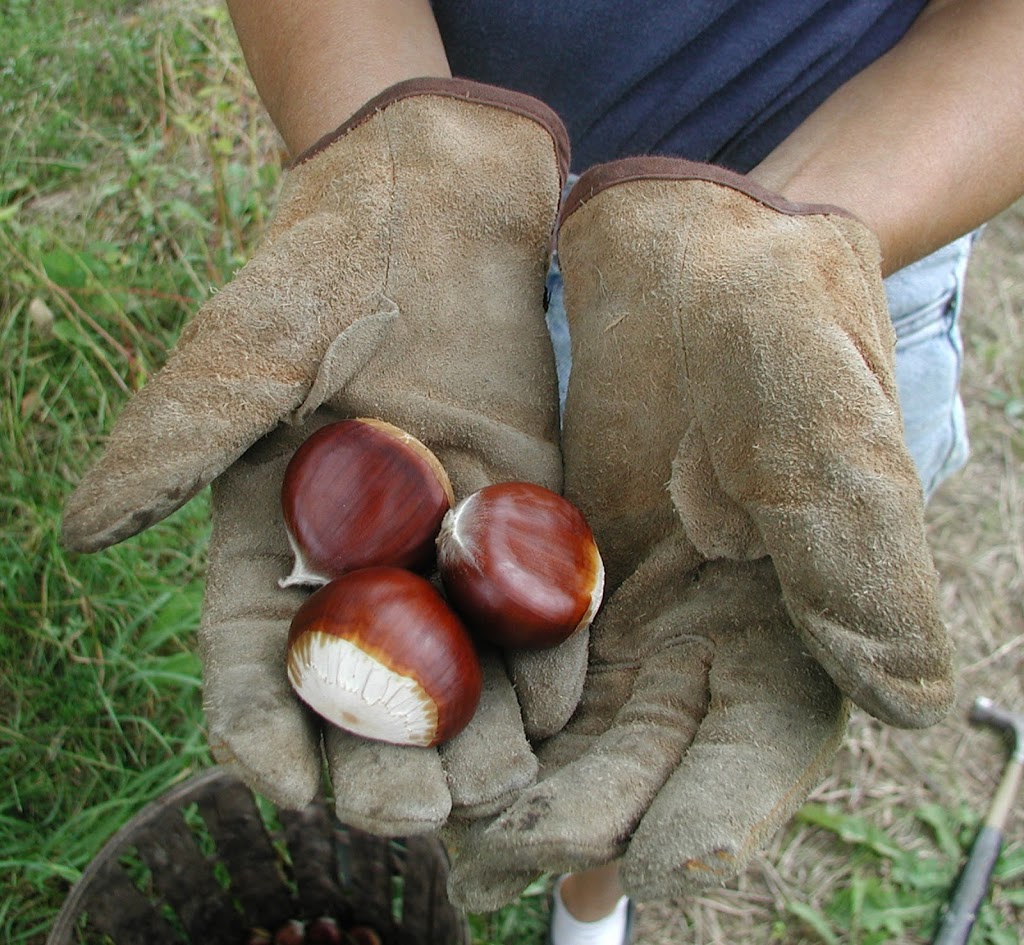
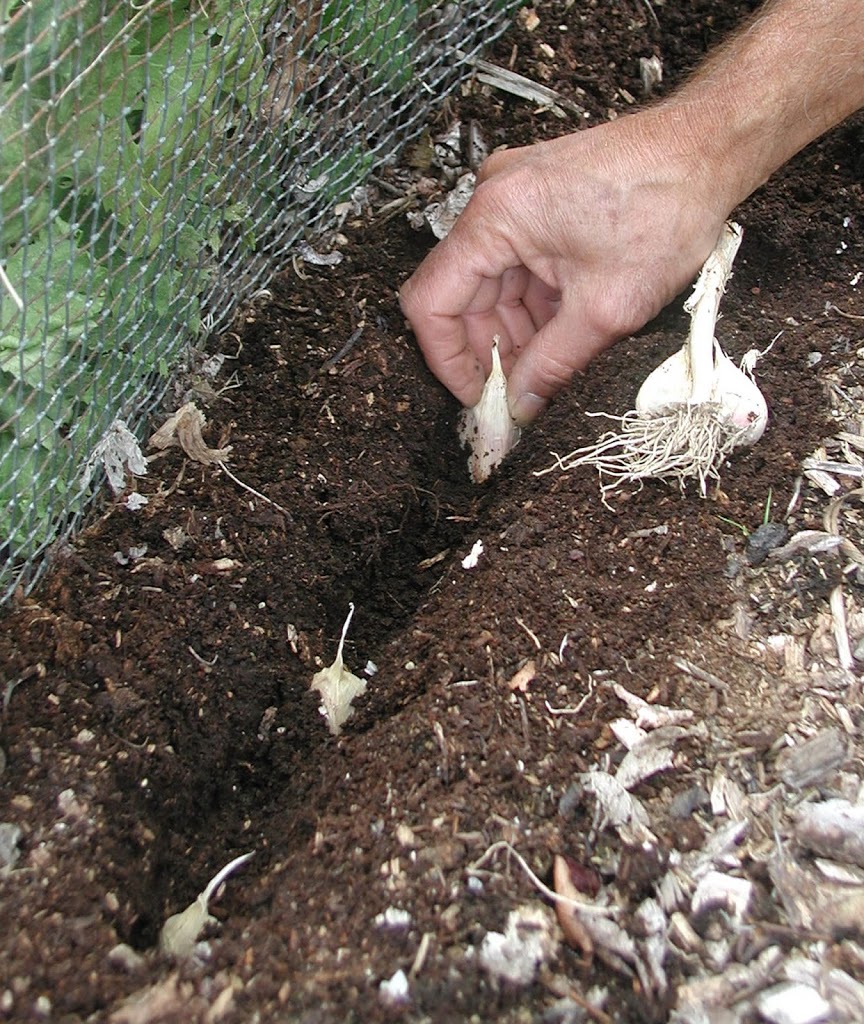


Wisconsin! I was born there … there it be cold. Colder than Maine and colder than where I live now on the St. Lawrence River. I, too, have a stag horn fern that will travel with me back down to Florida for the winter. It did well in my Northern garden this summer but now it hangs on the enclosed back porch. I would like to try a banana. There is a black walnut tree kitty corner from our lot – sometimes those nuts drop on the shed roof which is metal. The first time it happened I was in the shed and hunkered down thinking shots were fired. A friend of mine gave me a small jar of black walnut ink – an incredible gift, I know as those nuts are difficult to harvest — as you know. I had a good laugh reading about your methods.
I know what you mean about the sound of the nuts hitting a roof. It was my neighbor’s roof so I figured I was safe. Then I realized it was just black walnuts falling.
I’m in vt, with my first ever fogs in containers. They haven’t dropped leaves yet. Do i bring them inside now? Or wait for light frost?
Figs, not fogs!
HI Lee,
Growing up I remember my father having me do the foot roll. The last ten years we have been using a drill mounted paint mixer, 5 gallon bucket or small wash basin, and water place enough walnuts in so they are floating with space to move around run the mixer until you see that hulls are off. You and may want to try this method with the black walnuts it gets a lot done in a short amount of time. You will want the hulls pretty soft and mushy to have this work the best. My friend has a short video https://youtu.be/cnxB6SUk9RA of his son doing this method. Good luck!
I’ll give that a try next year.
Hello. I tried to post a couple of days ago about when to bring in my container fig plants. Hope you received it, but if you didn’t – I live in VT and bought three containers plants this summer. They were started over last winter, and grew enormously over the summer on my deck. We are getting overnight temps in high 20s now, so they are on teh deck, under the awning. Leaves haven’t dropped yet. When do I bring them in?
THANKS!
Jeanne Keller
Burlington, VT
Figs in pots generally can tolerate temperatures into the low 20s. Then bring them into a COOL place, ideally 30-45 degrees F.
Thanks. That’s the specificity I was hoping for. I have an unheated basement where we’ll overwinter them. Just wanted to know when to bring them in — sounds like when outside is before mid-20s.
PS: Love reading your blog.